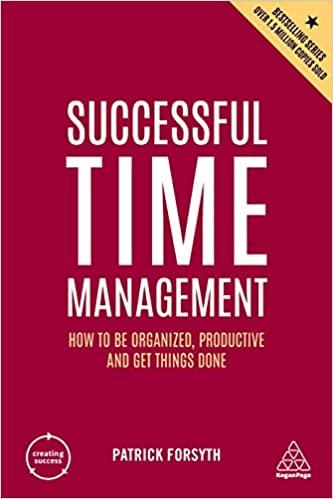Question
SECTION A [40 MARKS] Read the case study below and answer ALL the questions that follow. CAPACITY DISRUPTION AT BASF On October 17, 2016, because
SECTION A [40 MARKS] Read the case study below and answer ALL the questions that follow. CAPACITY DISRUPTION AT BASF On October 17, 2016, because of an incorrect maintenance operation on a pipeline at BASF facility in Ludwigshafen (Germany), there was an explosion and subsequent fires at North Harbor, a terminal for the supply of raw materials such as naphtha, methanol and compressed liquefied gases. More than 2.6 million tons of goods are handled there each year and an average of seven ships a day moor at its docks. Two steam crackers, the starting point for producing basic chemicals, needed to be stopped because they could no longer be supplied, and 22 were only partially working. The two steam crackers could have been restarted 2 days later, but only in May 2017 was the concept for reconstruction released whereby the reconstruction should be completed by September 2017. Restricted production output, daily revenue decreases of 1015% as compared to the previous year during the disruption period, impact on the basic chemicals division (about 21% of sales), delivery delays, limited access to key raw materials, exhausted product inventories, and a forecasted impact on 6% of BASFs annual earnings were some of the consequences of this incident (Dolgui et al. 2018). Logistics was temporarily shifted from ships and pipelines to trucks and trains. BASF was in close contact with its customers to keep them informed about the current availability of products to minimize the impact on customer deliveries. Because of BASF integrated Verbundsystem (networking system), comprised of various plants and delivery systems for feedstocks, the incident had an impact along the global supply chain (SC). This high and long-term impact is the so-called ripple effect (Ivanov et al.2014a, b). BASF built a resilient SC, which is why the economic consequences of the incident were considerably smaller than expected. BASF took process safety and risk prevention measures that included globally valid guidelines and requirements for buildings etc. and practical security trainings for employees and support staff. Along with process safety and risk prevention measures, BASF has global emergency response management. This management consists of the integration of worldwide group companies, joint ventures, partners, suppliers and customers. Emergency phones and an integrated network of control centres (e.g. internal/external fire departments and rescue service) also enable this global emergency response management to work even more closely together. BASF was prepared for the incident in October 2016, but there are still long-term impacts being experienced. Source: Ivanov, D. Tsipoulanidis, A and Schnberger, J. (2019) Global Supply Chain and Operations Management: A decision-oriented introduction into the creation of value, Springer Nature, Cham, 2nd Ed.,
QUESTION 1 [40 MARKS] 1.1 As extracted from the case study, BASF built a resilient supply chain, which is why the economic consequences of the incident were considerably smaller than expected. Considering this statement, critically discuss what resilient supply chains entail in the context of BASF and their significance in contributing to its bottom-line. Your response should make use of relevant examples. (20 marks)
1.2 With reference to the case study and using relevant literature, critically discuss the ripple effects of the explosion and subsequent fires at the North Harbor terminal from a supply chain context. Your response should discuss the impacts of these effects for BASF and its stakeholders. (20 marks)
SECTION B [60 MARKS] Answer ANY THREE (3) questions in this section.
QUESTION 2 (20 Marks) Using any manufacturing organisation of your choice, examine the levels of risks that the organisation can be exposed to. Make use of relevant examples in responding to the question.
QUESTION 3 (20 Marks) As part of the management team of any organisation of your choice, critically evaluate any FOUR (4) options that you will consider in improving your chances of accurately identifying risks.
QUESTION 4 (20 Marks) As the procurement manager for a manufacturing company located in East Africa, your responsibility is to create a procurement model that can effectively withstand the procurement risks likely to be encountered in the region. Analyse indepth the variables you will give priority to when crafting the organisation's procurement strategy. Make use of relevant examples.
QUESTION 5 (20 Marks) You are the new supply chain Director of Unilever Africa and at the top of your list is to ensure that the organisation adopts a sound risk management strategy which will allow it to achieve above normal profits. Critically discuss how this can be achieved. Your response should make use of relevant frameworks and examples. END OF PAPER
Step by Step Solution
There are 3 Steps involved in it
Step: 1

Get Instant Access to Expert-Tailored Solutions
See step-by-step solutions with expert insights and AI powered tools for academic success
Step: 2

Step: 3

Ace Your Homework with AI
Get the answers you need in no time with our AI-driven, step-by-step assistance
Get Started


